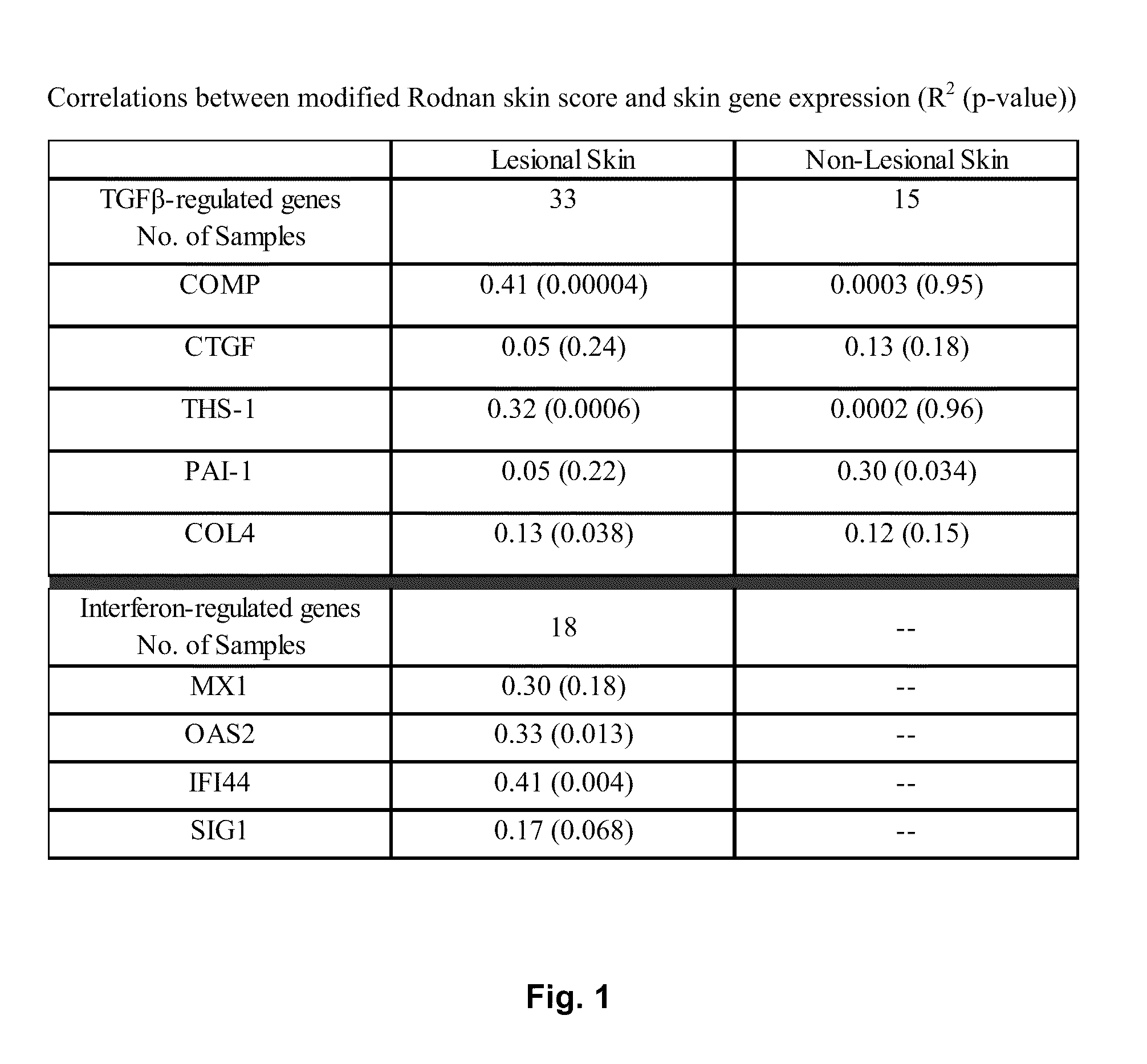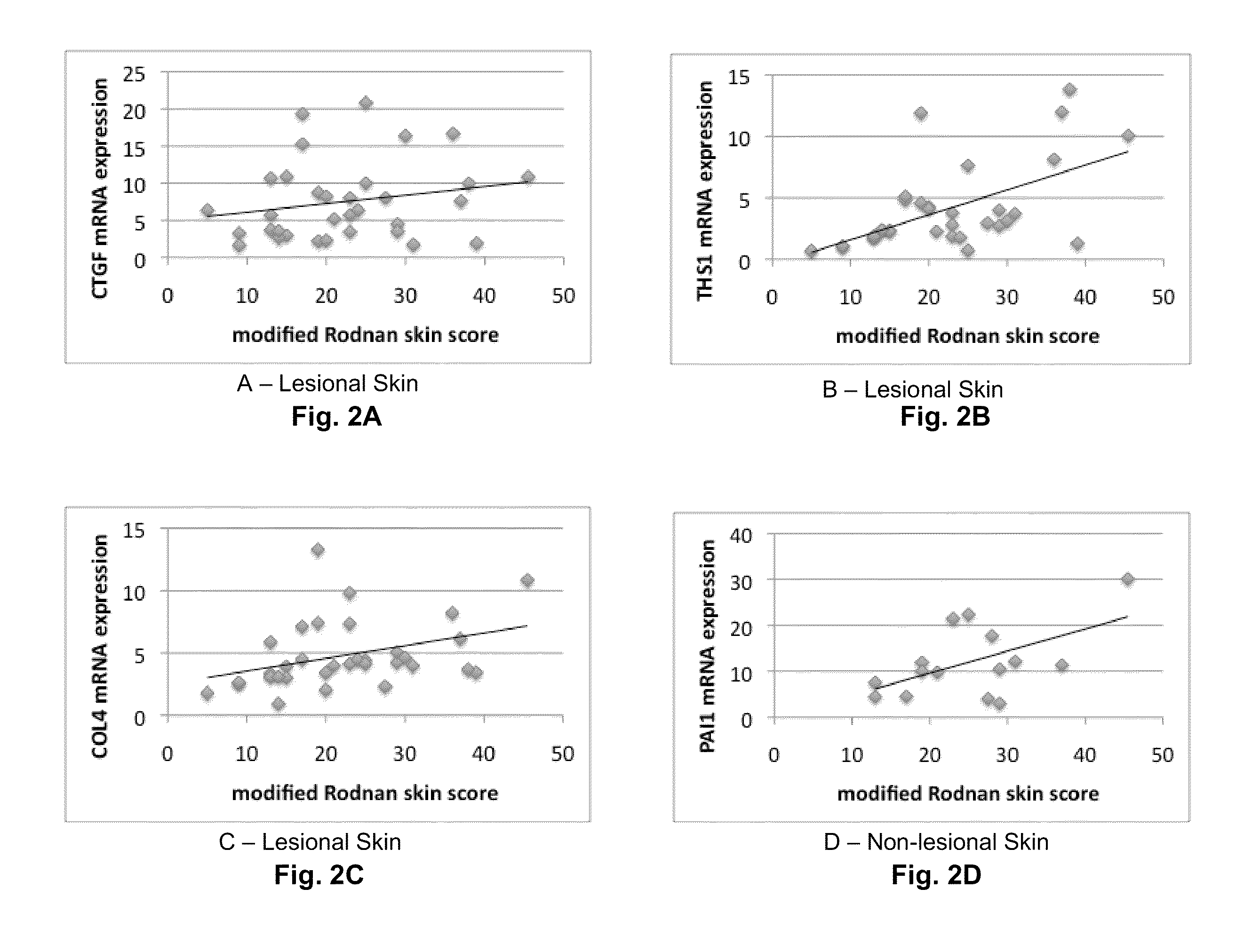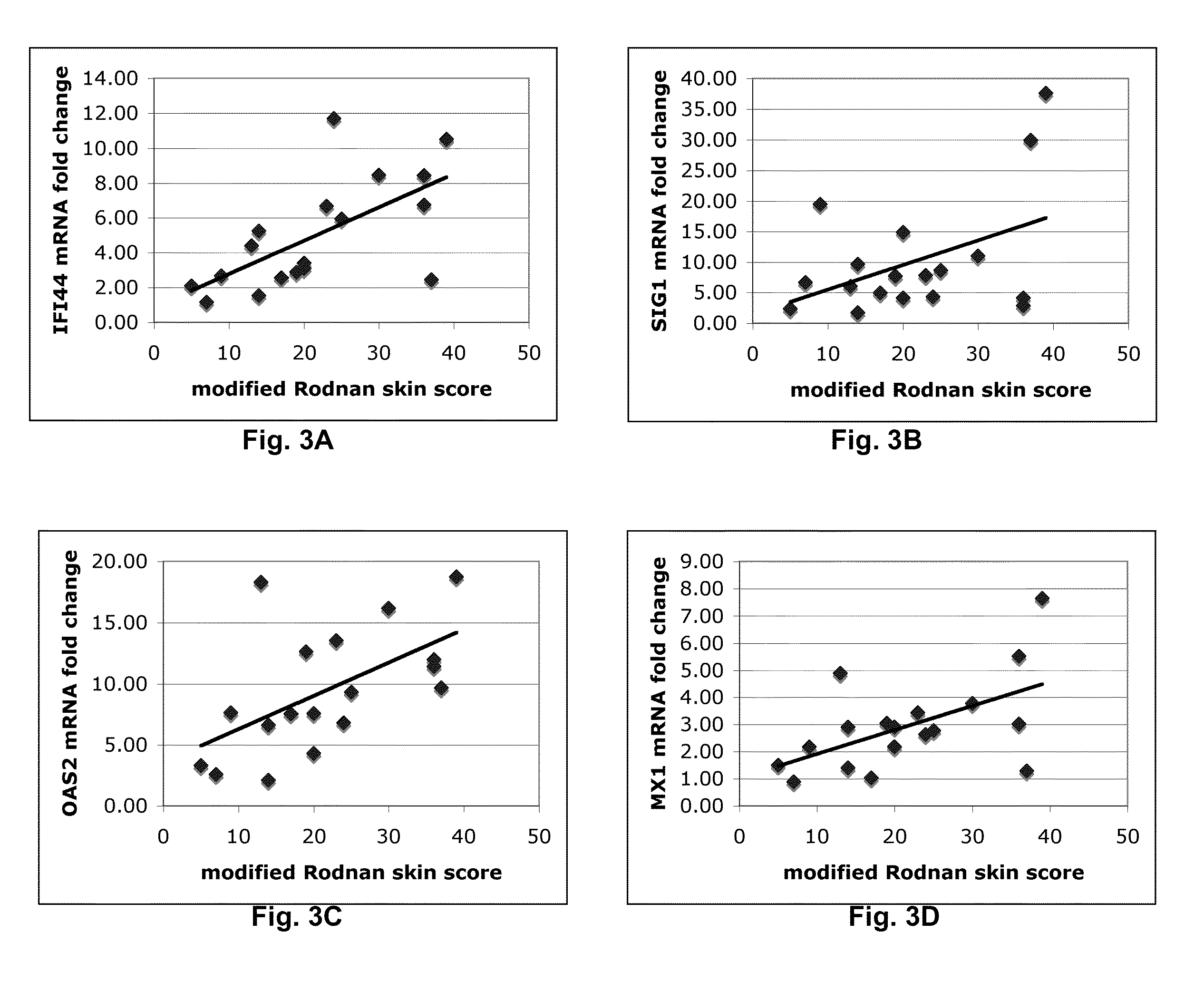Tools for objectively determining severity of systemic sclerosis
- Summary
- Abstract
- Description
- Claims
- Application Information
AI Technical Summary
Benefits of technology
Problems solved by technology
Method used
Image
Examples
example 1
[0025]In the first example, any one identified gene can be useful for predicting and / or supplementing the mRSS. The correlation between each gene and the mRSS is expressed in the listed R2 values of the table:
GeneOne Gene (R2)COMP0.64THS10.32SIG10.17IFI440.41MX10.30OAS20.33
example 2
[0026]In the second example, pair combinations of each gene can be useful for predicting and / or supplementing the mRSS. The correlation between each gene pair and the mRSS is expressed in the listed R2 values of the table. Each gene listed in column A is paired with the genes listed in columns B, C, D, E, and F, and the R2 values for the respective combinations are listed where the row for each gene listed in column A intersects the column below each gene in the columns B-F. The R2 value for each combination is listed only once.
GeneTwo Gene Fits (R2)ABCDEFCOMPCOMPTHS1SIG1IFI44MX1THS10.71SIG10.660.47IFI440.710.760.53MX10.640.610.370.43OAS20.670.550.380.480.35
example 3
[0027]In the third example, three-gene combinations can be useful for predicting and / or supplementing the mRSS. The correlation between each three gene combination and the mRSS is expressed in the listed R2 values of the table. Each gene listed in column A is combined with the genes pairs listed in columns B-K, and the R2 values for the respective combinations are listed where the row for each gene listed in column A intersects the column below each gene pair in the columns B-K. The R2 value for each combination is listed only once.
Three Gene Fits (R2)BCDEFGHIJKGeneCOMP / COMP / COMP / COMP / THS1 / THS1 / THS1 / SIG1 / SIG1 / IFI44 / ATHS1SIG1IFI44MX1SIG1IFI44MX1IFI44MX1MX1SIG10.74IFI440.840.730.86MX10.730.660.750.710.780.53OAS20.690.680.720.700.610.770.650.540.400.48
The p-values for the three gene combinations with the highest R2 values are as follows:
p-valuep-valuep-valuep-valueR2COMP:0.012THS1:0.003IFI44:0.0030.84THS1:SIG1:IFI44:0.0040.86
PUM
 Login to View More
Login to View More Abstract
Description
Claims
Application Information
 Login to View More
Login to View More - R&D
- Intellectual Property
- Life Sciences
- Materials
- Tech Scout
- Unparalleled Data Quality
- Higher Quality Content
- 60% Fewer Hallucinations
Browse by: Latest US Patents, China's latest patents, Technical Efficacy Thesaurus, Application Domain, Technology Topic, Popular Technical Reports.
© 2025 PatSnap. All rights reserved.Legal|Privacy policy|Modern Slavery Act Transparency Statement|Sitemap|About US| Contact US: help@patsnap.com



